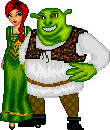Narrative ingredients that make slasher films attractive to audiences:
♥ Gory killings
♥ Chase between final girl and killer
♥ Open ending/ no closure
♥ Taking on the challenge to be scared
♥ Masochistic- identify with victims
♥ Sadistic- identify with the killer
♥ Visceral – heart beating fast
♥ Intellectual- thriller/ “who dun nit” enigma
♥ Counter culture attraction- being able to break moral and legal regulations
♥ Counter reading- repertoire of elements this is created by fan groups or create genre through their shared interest. E.g. slasher created from fans who like elements of both horror and thriller.
♥ Audience are taking of the challenge to be scared and can release their taboo desires in a safe social context.
Iconography of slasher films:
♥ Mask
♥ Murder weapon e.g. Knife (phallic object)
♥ Psycho killer
♥ Victims
♥ Final girl
♥ Isolated location
♥ Screaming
♥ Blood
♥ Bad weather
♥ Dead bodies/corpses
♥ Phone call
♥ Enigmatic Shadows
♥ Gory killings
♥ Chase between final girl and killer
♥ Open ending/ no closure
♥ Taking on the challenge to be scared
♥ Masochistic- identify with victims
♥ Sadistic- identify with the killer
♥ Visceral – heart beating fast
♥ Intellectual- thriller/ “who dun nit” enigma
♥ Counter culture attraction- being able to break moral and legal regulations
♥ Counter reading- repertoire of elements this is created by fan groups or create genre through their shared interest. E.g. slasher created from fans who like elements of both horror and thriller.
♥ Audience are taking of the challenge to be scared and can release their taboo desires in a safe social context.
Iconography of slasher films:
♥ Mask
♥ Murder weapon e.g. Knife (phallic object)
♥ Psycho killer
♥ Victims
♥ Final girl
♥ Isolated location
♥ Screaming
♥ Blood
♥ Bad weather
♥ Dead bodies/corpses
♥ Phone call
♥ Enigmatic Shadows
Narrative theory:
Propp character roles:
♥ Hero- in contemporary slasher is the final girl
Psycho (1960, Alfred Hitchcock) - hero is Sam Loomis because he saves her from Lila Crane

Texas chainsaw massacre (1974, Tobe Hooper) - hero is final girl sally

Halloween (1978, john carpenter) – Laurie

Friday the 13th (1980, Sean S Cunningham) Alice

Nightmare on elm street (1984, Wes Craven) Nancy- she saves herself

Scream (1996, Wes Craven) Sidney Prescott

Texas chainsaw massacre remake (2003, Marcus Nispel) final girl Erin

♥ Villain/s
Psycho (1960, Alfred Hitchcock) Norman Bates/ mother

Texas chainsaw massacre (1974, Tobe Hooper) Leatherface, hitchhiker, old man

Halloween (1978, john carpenter) Michael Myers

Friday the 13th (1980, Sean S Cunningham) Mrs Voorhees

Nightmare on elm street (1984, Wes Craven) Freddy Kruger

Scream (1996, Wes Craven) Billy Loomis and Stuart


Texas chainsaw massacre remake (2003, Marcus Nispel) Leatherface and his family

♥ Helper
Psycho remake (1998, Gus Van Sant) Sam Loomis as he hits Norman in the head with a pan
Lila kicks him in the face
Halloween (1978, John Carpenter) Dr. Sam Loomis is the helper as he shoots Michael which results him falling out the window

Scream (1996, Wes Craven) - Gale Weathers

Todorov narrative structure:
Does not follow as there is no closure at the end as the killer usually escapes
Or the killer is not dead
However, in scream both killers are killed off so there is a resolution and a sense of closure and does conform to Todorov’s narrative structure.
Strauss binary oppositions:
Psycho (1960, Alfred Hitchcock):
♥ Mother vs. Norman
♥ Killer vs. victim
♥ Mental vs. sane
♥ Female vs. male
♥ Mother vs. son
♥ Good vs. evil
♥ Hate vs. love
♥ Life vs. death
Texas chainsaw massacre (1974, Tobe Hooper):
♥ Male vs. female
♥ Mental vs. sane
♥ Life vs. death
♥ Killer vs. victim
♥ Good vs. evil
♥ Heroine vs. villain
Halloween (1978, John Carpenter):
♥ Good vs. evil
♥ Final girl vs. killer
♥ Victim vs. killer
♥ Mental vs. sane
♥ Life vs. death
Friday the 13th (1980, Sean S Cunningham):
♥ Killer vs. victim
♥ Final girl vs. killer
♥ Good vs. evil
♥ Life vs. death
♥ Mother vs. son
♥ Mental vs. sane
♥ Heroine vs. villain
Nightmare on elm street (1984, Wes Craven):
♥ Authority figures vs. teenagers
♥ Mental vs. sane
♥ Reality vs. dream
♥ Female vs. male
♥ Life vs. death
♥ Parents vs. Freddy
♥ Victims vs. killer
Scream (1996, Wes Craven):
♥ Authority figures vs. teenagers
♥ Male vs. female
♥ Final girl vs. killer
♥ Heroine vs. villain
♥ Mental vs. sane
Texas chainsaw massacre remake (2003, Marcus Nispel):
♥ Teenagers vs. authority figures
♥ Good vs. evil
♥ Mental vs. sane
♥ Life vs. death
Switchblade romance/ Haute tension (2003, Alexandre Aja):
♥ Love vs. hate
♥ Male vs. female
♥ Good vs. evil
♥ Mental vs. sane
♥ Life vs. death
Barthes Roland
Enigma code- used in:
♥ Psycho (1960, Alfred Hitchcock)
♥ Friday the 13th (1980, Sean S Cunningham)
♥ Scream (1996, Wes Craven)



No comments:
Post a Comment